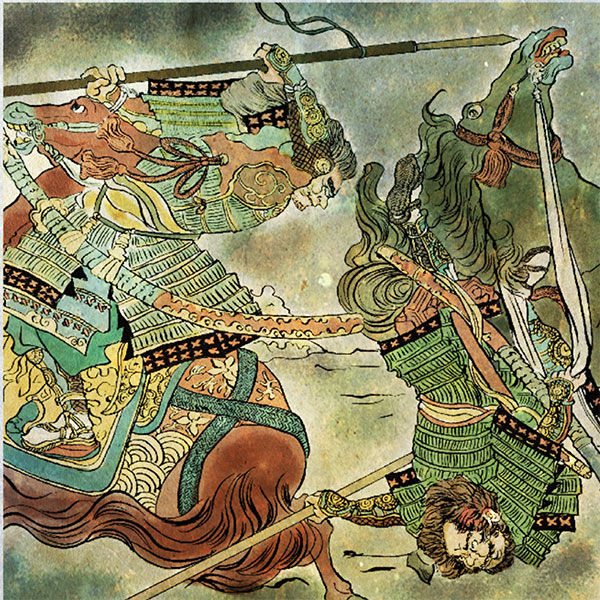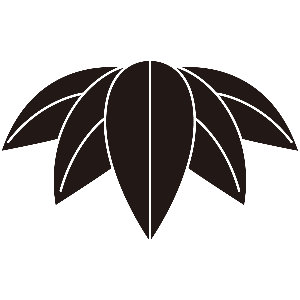- Kitsuki domainA small domain ruled by two families
- The Kitsuki clan was a domain that ruled Kunisaki and Hayami counties in Bungo Province, and was a domain of feudal lords ruled by two families, the Ogasawara clan and Matsudaira Nomi, with Kitsuki Castle as the domain office until the end of the Edo period. Although it is a small domain with an income of 20,000 to 40,000 koku, they cultivate rushes, which are the raw material for tatami mats, and have little flat land.

Kitsuki CastleKitsuki City, Oita Prefecture
- spring
- summer
- autumn
- winter
- TOP
- Kyushu
- Oita Prefecture
- Kitsuki Castle
| Other name | Kitsuke Castle, Katsuyama Castle, Gagyu Castle |
|---|---|
| castle construction | 1394 |
| address | 16-1 Kitsuki, Kitsuki City, Oita Prefecture |
| telephone number | 0978-62-4532 |
| Opening hours | 10:00-17:00 (Admission until 16:30) |
| closing day | none |
| Admission fee | General 400 yen / Elementary and junior high school students 200 yen |
- Access to Kitsuki Castle
- About 15 minutes by bus from JR “Kitsuki” station
HISTORYKitsuki Castle was the scene of a major battle during the Sengoku period.
Kitsuki Castle is a flat castle that once existed in Kitsuki, Kitsuki City, Oita Prefecture. It is also known for the fierce battle that took place during the Sengoku period between the Kimura clan, the lord of the castle, and the Shimazu clan, who were aiming to unify Kyushu. Let's unravel the history of Kitsuki Castle.
- From the construction of Kitsuki Castle to the Edo period
- Kitsuki Castle was built on Mt. Daisen at the mouth of the Yasaka River by the Kimura clan, an offshoot of the Otomo clan, a venerable retainer dating back to the Kamakura period. Mount Tai is a natural fortress with the Takayama River to the north and Morie Bay to the east, making it impossible to attack. The Kimura clan built a rengu-style flat mountain castle there and divided the mountain into four parts with a dry moat. At the time of construction, it was called Kitsuke Castle.
During the era of the 16th generation head of the Kimura clan, Chishinao Kitsuke, the Toyosatsu War took place between the Shimazu clan and the Otomo clan, who were aiming for the top position in Kyushu, from 1586 to 1587. Chichinao Kitsuke sided with the Otomo clan and withstood the army of Tadamoto Niino, a vassal of the Shimazu clan, by locking himself up in Kitsuki Castle for two months. It is said that Kitsuki Castle was given the other name ``Katsuyama Castle'' after this battle. The Battle of Toyosatsu was the trigger for Toyotomi Hideyoshi to conquer Kyushu. When Chishinao Kitsuke's lord, Yoshimune Otomo, the eldest son of Sorin Otomo, was accused of a blunder in the Bunroku War and resigned, Chishinao Kitsuke swept the castle grounds and committed suicide with his wife. It's being passed on.
After the Kimura clan passed away, Kitsuki Castle became a property (directly controlled territory) of the Toyotomi family. After Geni Maeda and Tsugujun Miyabe served as magistrates, it became the fief of Nagafusa Sugihara in 1596. It is said that the Keicho-Bungo Earthquake occurred in the same year, and the following year the castle tower and other buildings were damaged as a result of a rainstorm, so he moved his residence to the northern foot of Mt. Sugihara Nagabodai. - Kitsuki Castle in the Edo period
- In 1600, Kitsuki became the domain of Tadaoki Hosokawa, and in 1601, Yasuyuki Matsui became the castle owner. Then, in June 1608, the castle tower was destroyed by lightning and rebuilt. According to records, this rebuilt castle tower was in the form of a three-story tower. In 1615, when the One Country, One Castle Order was promulgated, the main walls of Mt. Daisen were demolished and the main functions were moved to the residence at the northern foot of Mt. Daisen, which later became the feudal lord's palace. This relocation was completed in the mid-17th century, and by the end of the 17th century, the Taishan Wall was completely abolished. The Confucian scholar Ekiken Kaibara's visit to Kitsuki in 1694 is recorded in the book ``Toyokuni Kiko'' with the sentence ``There is no castle in Kitsuki, but there is a town.'' Regarding the castle town, it is written that ``Kitsuke town is located between mountains and valleys and has many slopes.'' Until the 17th century, Kitsuki Castle was called Kitsuki Castle, but in 1712, the shogunate's red stamp letter instead of ``Kitsuki'' was written as ``Kitsuki.'' Unable to point out the mistake, he submitted a report to the shogunate and changed the name of his domain and castle to ``Kitsuki.''
- Kitsuki Castle after the Meiji era
- At the beginning of the Meiji era, the buildings of Kitsuki Castle were demolished. In 1972, the entire area of the castle ruins in Taishan was developed and turned into a park, and a three-story, three-layer, three-story watchtower-type mock castle tower made of reinforced concrete was rebuilt. The inside is a museum and observation deck, and is one of Kitsuki City's tourist attractions. In 2017, a survey of historic sites was conducted with the aim of designating the site as a national historic site, and the remains of earthworks and trenches were confirmed. In addition, the palace ruins, which were the center of the Kitsuki clan's administration throughout the Edo period, were home to Kitsuki Shrine, the former Kitsuki Junior High School, and the former Kitsuki City Library, and the remains of the moat, stone walls, and garden remain.
Read about incidents related to Kitsuki Castle
- Kyushu pacificationHideyoshi defeated Shimazu and took control of Kyushu.
- Toyotomi Hideyoshi succeeded Oda Nobunaga and promoted the unification of Japan. Hideyoshi made his biggest rival, Tokugawa Ieyasu, a vassal after the Battle of Komaki and Nagakute in 1584, and in 1585 he defeated Motochika Chosokabe and conquered Shikoku.

History of the Kitsuki clan, with Kitsuki Castle as its domain office
| Domain office | Kitsuki Castle |
|---|---|
| old area | Kunisaki District, Hayami District, Bungo Province |
| stone height | 32,000 koku |
| Fudai/Tozama | Fudai |
| main lord | Ogasawara family/Nomi Matsudaira family |
| Estimated population | 52,000 people (first year of the Meiji era) |













